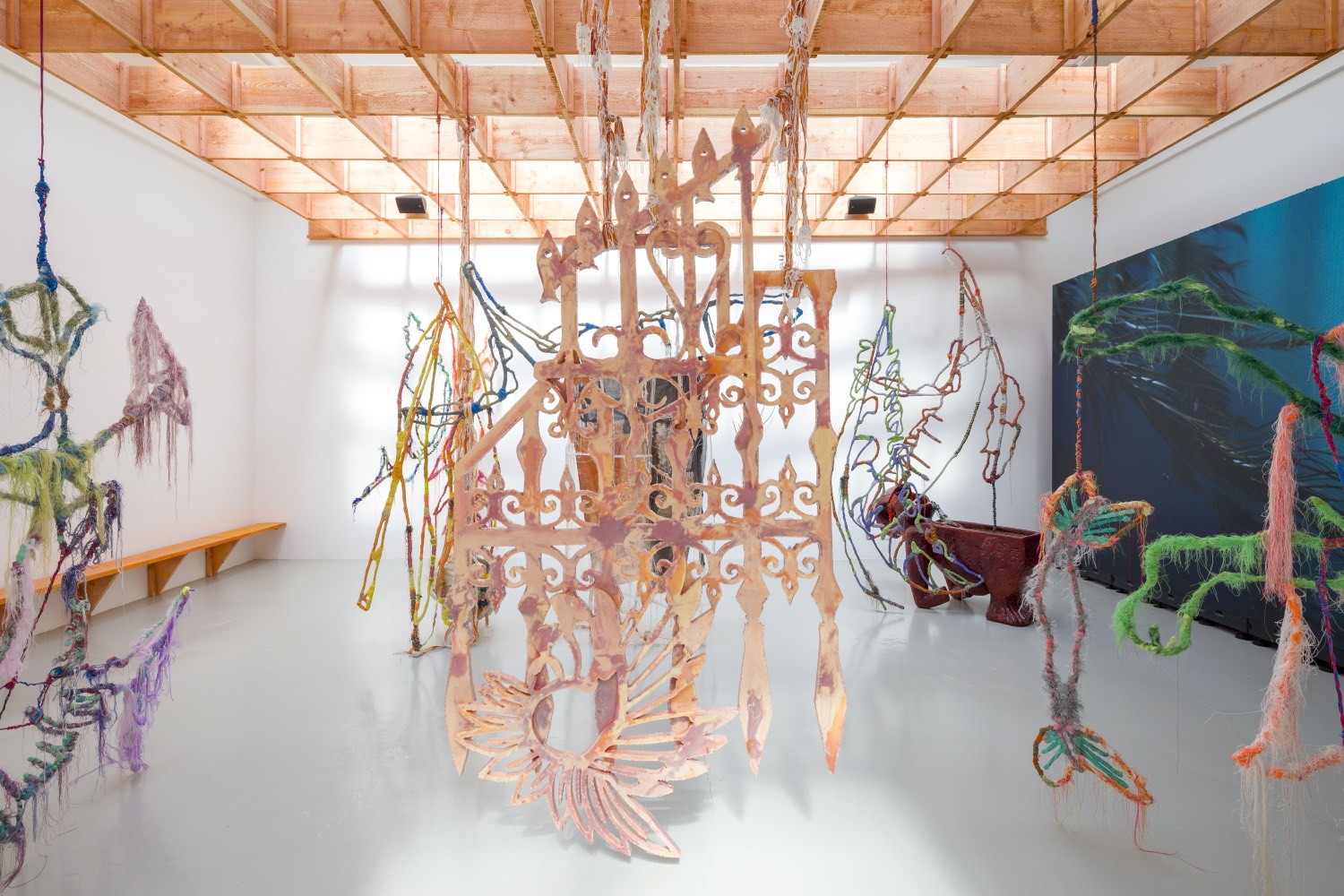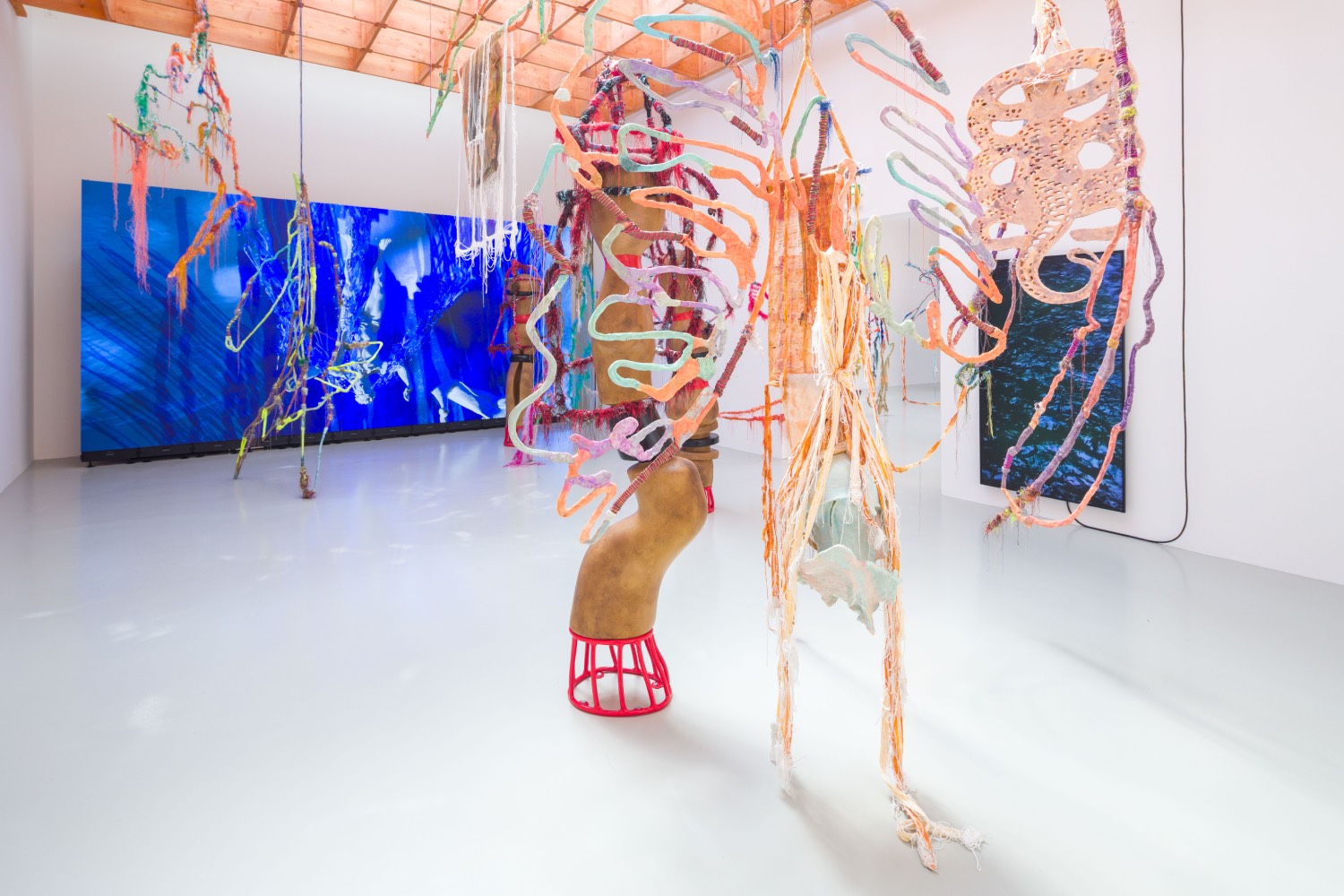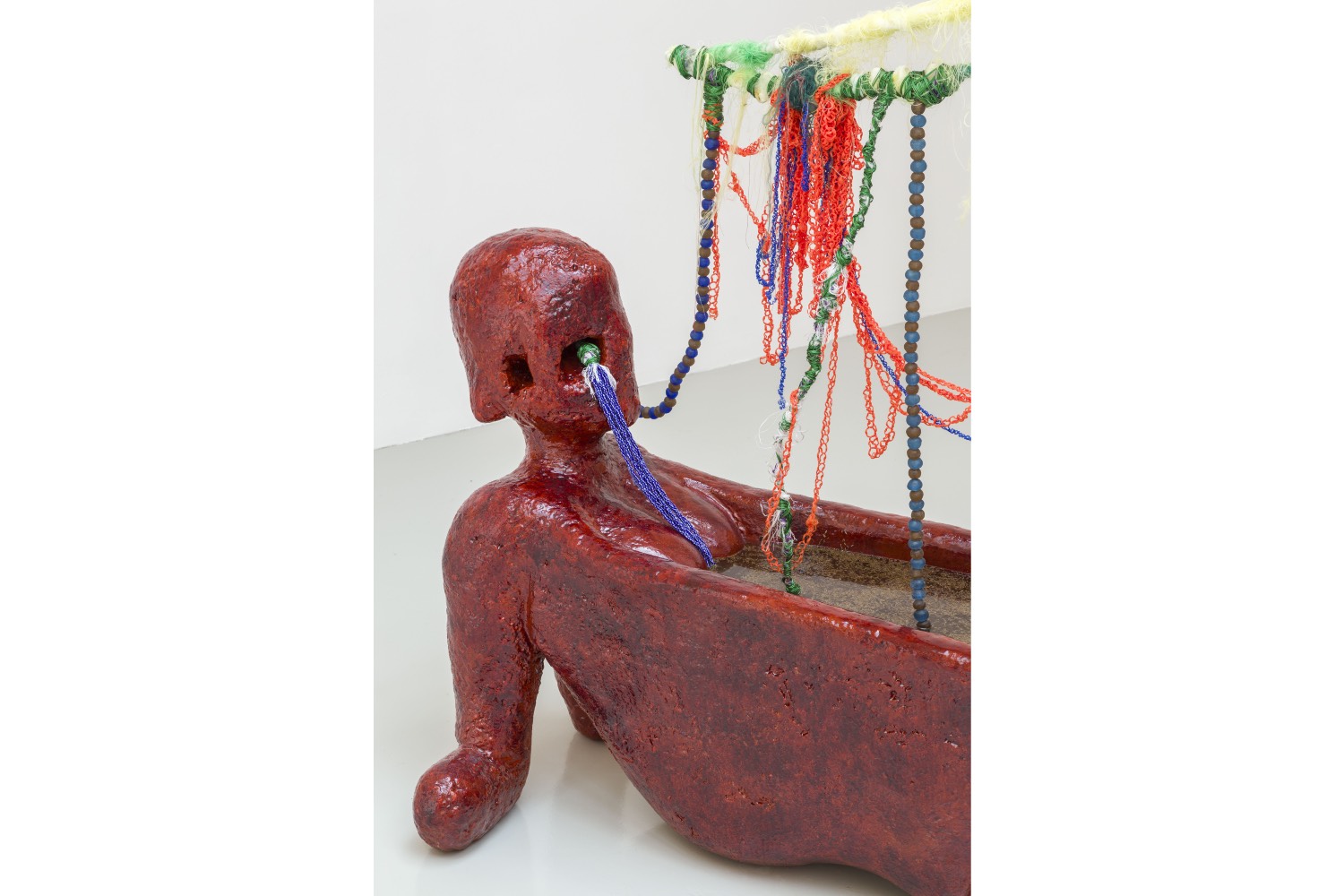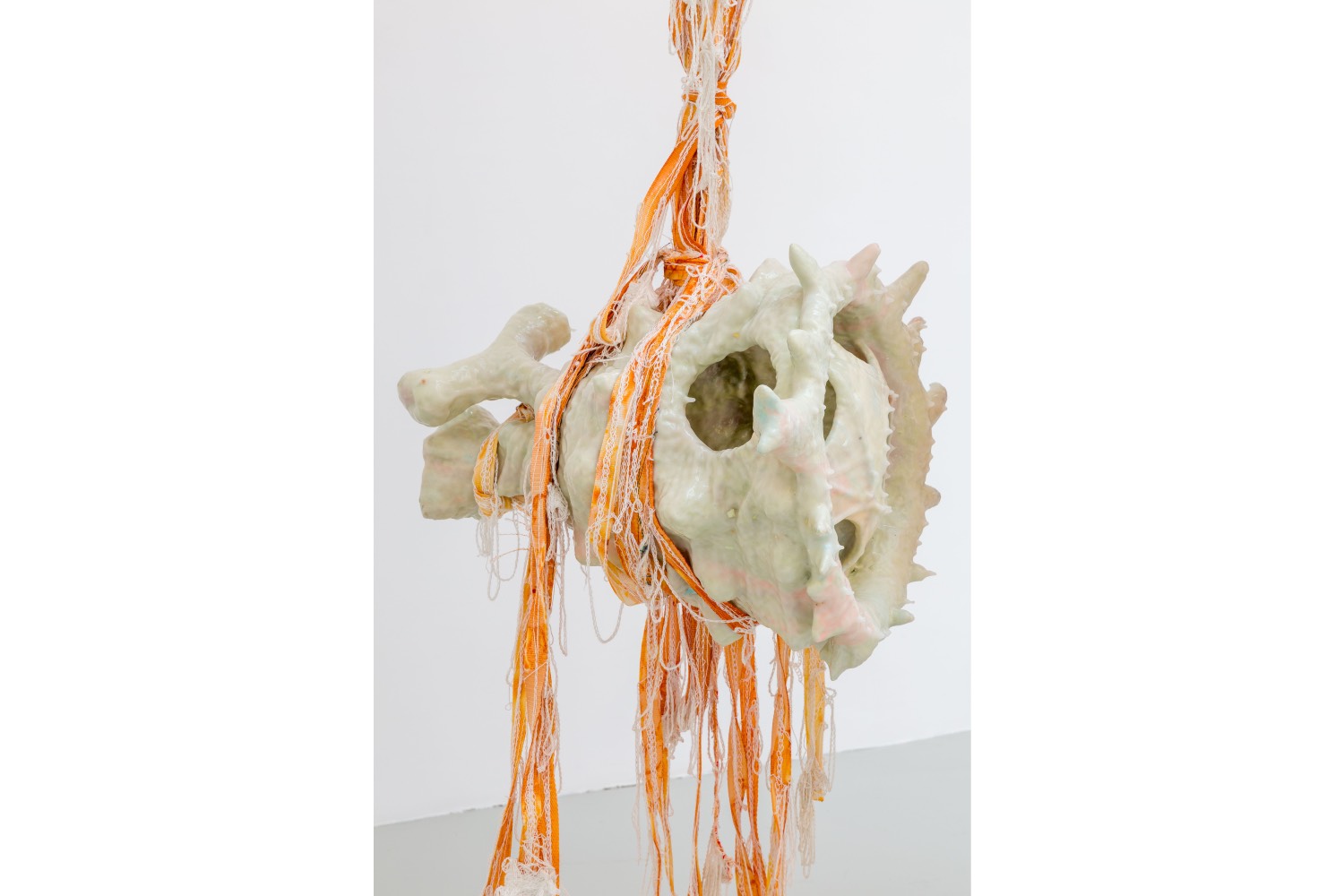The video of the French Pavilion press conference was filmed on the island of Martinique, where Julian Creuzet grew up. The video captures its beautiful natural environment, with the ocean behind the speakers and wind through their hair. Martinique is a place where you can create and observe the world outside of a big city, such as Paris—one of Europe’s art capitals. An artist is able to look at the idea of country and environment far from the frenetic city and perhaps rewrite it. His announcement as this year’s artist representing France at the 60th Venice Biennale was also held in Martinique to highlight the rugged Caribbean territory and its art scene, a major source of Creuzet’s inspiration.
The title of the whole project reads more like lyrics than an actual art installation: Attila cataracte ta source aux pieds des pitons verts finira dans la grande mer gouffre bleu nous nous noyâmes dans les larmes marées de la lune (translated: Attila cataract your source at the feet of the green peaks will end up in the great sea blue abyss we drowned in the tidal tears of the moon). Before you even enter the actual French Pavilion, a large screen welcomes the public with an animation presenting four figures that embrace new backgrounds as different landscapes pass by.
Once entering the main room, an immersive installation takes over the space, as the public slaloms across each hanging creature, a feeling of natural calamity overtakes the viewer.
The sight of the Matoutou falaise, a red tree spider from Martinique, is a gift when it appears in dense forests, on the bark of the Zamana trees, or on the rocks of the shores of the island. It extends a deep connection to the environment, an eye that sweeps the contours of the earth and glides over its many textures. It’s about appearances and disappearances, what is given, protected, and unseen. This way of seeing is undoubtedly what Julien Creuzet strives to offer through an encounter with his installation. It describes an immersion into a poetry of forms and sounds, volumes and lines in movement, colourful encounters forming new languages: an experience to be lived deeply. This tarantula, endemic to Martinique, could very well symbolize a way of being with art that history has yet to write. It nourishes and protects, teaching a sensitizing and poetic understanding of the world and proffers a softer gaze to approach the many ecologies of life. Creuzet’s forms stem from a locus of emancipation, which must be felt to truly see. It’s a moment of learning and unlearning as reconciliation with our senses and an untranslated space of liberation.
“Many of us have an idea of the ultra-marine,” the artist says, “a cosmic, mysterious water-land or a character, or even a superhero.”
Creuzet’s work also focuses on spoken word, so a “sonic reader,” including more than seventy sound pieces, will be shared regularly on @attila_cataracte during the Biennale. An artist’s book titled A catalogue by Julian Creuzet, published by Beaux-Arts de Paris editions in partnership with Intitut Français, contains a series of unpublished image collages by Creuzet, poems, and passages of text. Creuzet said his installation was inspired by his childhood and weekends spent with his father and little brother in the thick woods around Anse Couleuvre. They’d make a game of looking for the Martinique red tree spider. “Looking for this spider, trying to catch a glimpse of it in the density of the foliage, is sometimes a chance encounter that jumps out at you; sometimes it is a real in-depth quest into the density of trees, foliage, branches, decomposing trunks. Sometimes, you think you see it, and it’s not there; sometimes, you actually see it, and sometimes, you just fantasize about it. There’s something of that about the pavilion,” Creuzet said.. The artist described the installation as “a crossway, a place where anything may be encountered, above all oneself.” Yana Peel, director of the Chanel Culture Fund, the institution supporting the project this year at the Biennale, said that walking into the French Pavilion for the first time “is a wonderful moment. Julien is adept at poetry, music, film, and animation. He is a prodigious assembler of the ready-made, and he has an intuitive ability to weave together many different cultural legacies. His art is driven by his scholarship as a professor of art at the École des Beaux-Arts de Paris. But it’s also propelled by his willingness to travel the world, to soak up all he sees. Flotsam washed up by an ocean tide can stand shoulder to shoulder with the work of an old master. It’s audacious and exciting.”
Chanel’s support of Creuzet marks the biggest brand collaboration for the Venice Biennale since architect Zaha Hadid designed the 2008 mobile art pavilion. The Chanel Culture Fund, which was established in 2021, aims to support creative pioneers and work with international museums and institutions that are open to showcasing art in innovative ways. It was built on the brand’s tradition of patronage and Gabrielle “Coco” Chanel’s pivotal role in supporting the arts.
The company’s aim, it stated, is to “champion creative audacity for a better future” and “give visibility to global game changers at a time when the arts provide a vital source of inspiration and shifting perspectives on the way we view the world.”






